15 Beagle Facts: Get to Know This Lovable Dog Breed Better
Friendly and affectionate, the beagle dog breed has a whole lot to offer the right family. Read on to learn some interesting beagle facts and find out if this breed is a good fit for your family in the process.
DOG HEALTH

Posted by bravectosouthafrica – 11 November 2020
Familiarise Yourself With the Beagle Dog Breed
Whether you’re already a proud beagle parent or are looking to add one to your family in the future, Bravecto® hopes to relay some new and interesting facts about beagles you may not have known.
Fact 1: The Beagle Dog Breed Is a Very Old One
You may be surprised to learn that the beagle is a very old dog breed. In fact, it is a dog breed so old that its exact origins are not clear. However, it’s known that the modern beagle’s ancestors inhabited England from the era of the Roman Empire or even before. One breed historian has stated that writings about the dog breed can be traced back to as early as the 1400s.
Modern-day beagles are descended from hounds that were used by hunters who hunted on foot in England, Wales and France. These hounds hunted together in packs. Their popularity might have grown with the rise of fox hunting in the region, but beagles are best known for hunting rabbits. Historically, beagles have also been known to hunt animals such as jackals and wild pigs.
Although you might still hear about some beagles being used as hunting dogs – individually or in packs – today, they are mostly known as your lovable house dogs.
Fact 2: An Early Variety of the Dog Breed Was Known as the ‘Pocket Beagle’
Believe it or not, this minute variant of the beagle only stood approximately 20-23 cm tall but was used for hunts on horseback. Their name comes from the fact that they could fit inside a hunter’s coat pocket and ride along up to the starting point of the hunt.
Pocket beagles were at the height of their popularity back in 16th century England and Queen Elizabeth I was a huge fan. She referred to them as her ‘singing beagles’, due to their high-pitched voices. The Queen entertained banquet guests with a bunch of pint-sized pups roaming about the dining tables.
If the prospect of owning a pocket beagle has left your heart beating faster with a feeling of excitement, we’re sad to inform you that this variety of the breed no longer exists. The genetic line died out during the 19th century and it hasn’t been a recognised dog breed variant by any kennel club since 1901. If a breeder tries selling you a teacup beagle puppy with this label, it is not and cannot be a true pocket beagle. It could simply be the smallest pup of the litter and may be prone to experiencing health issues.
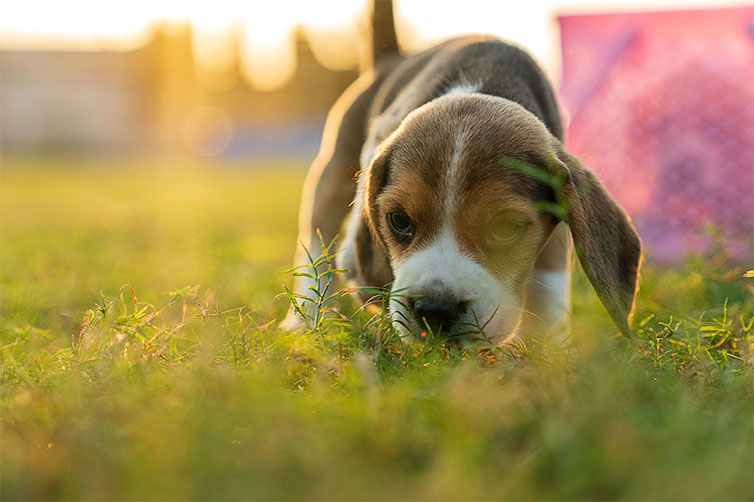
Fact 3: The Breed Was Bred to Have White Tipped Tails for a Good Reason
Those familiar with beagle dogs will know all about their white-tipped tails. Beagle owners can spot their beloved dogs from quite a distance away because of their tails’ white tips. It comes as no surprise that they were bred to display this particular physical trait. All purebred beagles will have at least a few white hairs on the tip of their tail, but they’re usually mostly white.
You see, hunters found that spotting dogs with white-tipped tails amongst tall grass made their lives far easier. It is a clever and iconic trait.
Fact 4: The Beagle Belongs to a Group of Dogs Classified as Scent Hounds
The beagle forms part of a group of dogs labelled as ‘scent hounds’, due to their incredible talent for picking up a scent and following it ceaselessly.
To put things into perspective: it has been found that beagles have up to 220 million scent receptors in their nose. This is approximately 44 times more than what you have in your nose. Much like having a faster processor in a computer, the area of the beagle’s brain that is dedicated to identifying and picking up smells is far larger than the one found in the human brain.
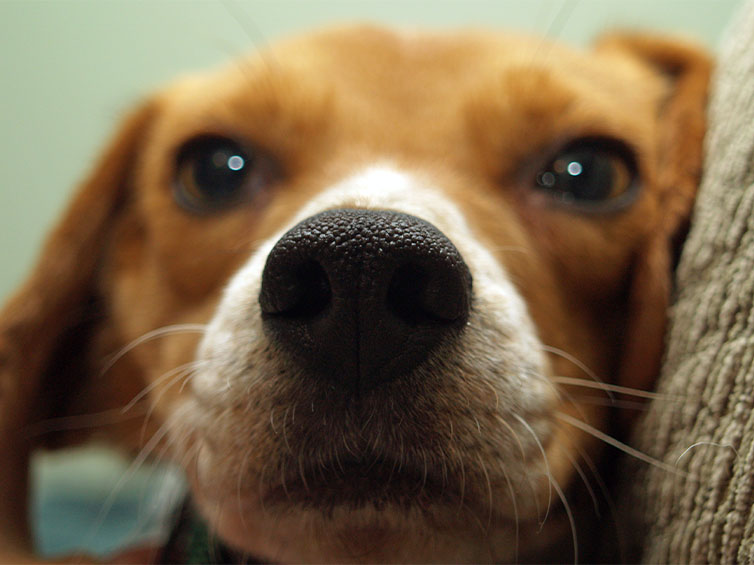
Fact 5: A Beagle’s Ears Help With Their Sense of Smell
These dogs have the most delightfully soft and velvety ear flaps. But did you know that their long, floppy ears help to improve their ability to pick up and track a scent?
While their nose is pressed to the ground, their ears end up creating micro air currents. The slight breeze caused by this stirs up any scent molecules left behind and directs them towards the dog’s nose.
Fact 6: This Hound Dog Breed Can Locate Their Target on Half a Hectare of Land in Less Than a Minute
Despite their fantastic sense of smell, beagles are, however, not one of the first choices for air-scenting. Ground-scenting is where they truly shine as beagles have a far more reliable and developed sense of smell in this department than any other dog breed.
Canine behavioural researchers during the 1950s had placed a mouse on half a hectare of land to study how long it took dogs to find it. The beagles were found to locate the mouse in less than a minute, compared to other breeds that took nearly 15 minutes and some didn’t even end up finding the mouse at all.
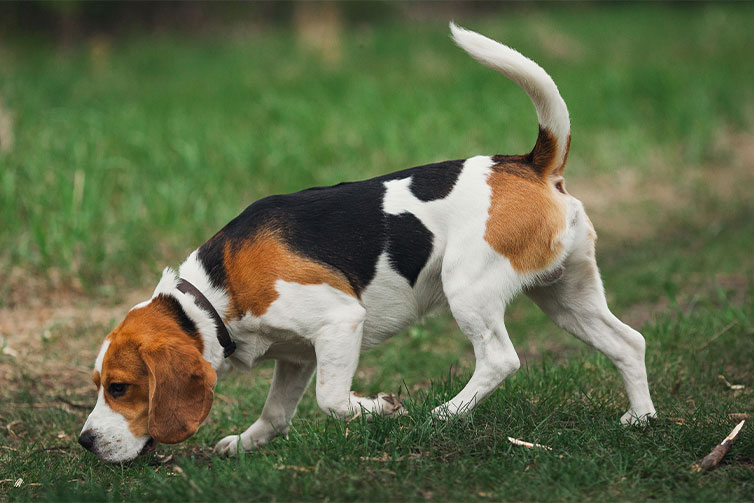
Fact 7: The Beagle’s Vocal Range and Name Origin
Two facts for the price of one, as these two are so closely related. A beagle’s vocal range is extensive and they adore making use of it. The different sounds they make help their owners and other dogs understand what they’re saying.
Of course, there’s the standard bark, used to alert you to the fact that the mailman is here. There’s also the yodel-like howl, reserved for moments of great excitement like when they catch the scent of an intriguing trail. It communicates that their friends should come and join in (they are pack animals, after all). Finally, there’s the mournful howl. They reserve this sound for when they feel bored, sad or lonely – simply because they can and it makes them feel better.
On to how the beagle got its name. Initially, ‘beagle’ was a general term used to refer to various hound dogs and it’s believed the name has its origins in the Middle French ‘bee gueule,’ which literally translates to ‘wide throat.’ Translating it more poetically leaves you with the word ‘loudmouth,’ which seems to be appropriate!
Fact 8: A Breed That Needs to Feel Part of a Pack
Due to their past as hunting dogs, beagles need to feel like they are included in a pack. One of the beagle’s cons is that they don’t enjoy being left alone. They have a tendency to suffer from separation anxiety.
When left alone for an extended period, this dog breed tends to resort to acting out. Their incessant howling may end up giving the neighbours a headache. Alternatively, they might end up destroying your house and home in protest or out of distress.
Most of these hound dogs love to be part of a large human family.

Fact 9: The Canine Escape Artist Dog Breed
Beagles are a hound dog breed of Houdini’s. You’ll find the beagle has the ability to just keep on running. It’s all thanks to their hunting dog heritage. They are so motivated to track a scent once they’ve picked it up, that they will go to great lengths to solve problems and overcome any obstacles that stand in their way.
Beagles left alone in a yard for hours on end may use their powers of escapism to get out and follow their nose in pursuit of entertainment. A beagle can jump well, a skill they use to overcome any hurdles in their way. And for the times jumping their way to freedom doesn’t work, there’s always digging their way out!
Fact 10: Despite Being Used for Hunting, the Dog Breed Generally Gets Along With Other Animals
Beagles are known to be one of the most curious and playful dog breeds. It may come as a surprise that the breed is not territorial or defensive at all, despite their use in hunting. They are a dog breed that enjoys socialising with other dogs very much. Beagles tend to get along with other animals because they don’t treat them as a threat. They have a friendly disposition.

Fact 11: When It Comes to Grooming, It Is a Fairly Low-Maintenance Dog Breed
Some dog breeds require plenty of grooming attention and are a lot to handle. Not the beagle. If you’re looking into the dog breeds that only need a weekly brushing and occasional bath, then the beagle is for you.
For their coat to remain in top condition, a beagle only needs a proper brushing once a week. This will also get rid of any excess hairs. Brushing your beagle will stimulate the oils in their skin and help to give it a healthy shine. These oils help in repelling water which, in turn, helps them to maintain a consistent body temperature.
Due to their short hair, they are also minimal shedders. As with most dogs, their coat will get thicker during the winter and they will shed more in the springtime.
Fact 12: A Colourful Dog Breed
Most people are familiar with the tri-colour beagle, which has a smooth and dense coat in a combination of white, black and brown. But the beagle can be found with coats in different shades too. These include:
- Black
- Blue mottle
- Lemon
- Red
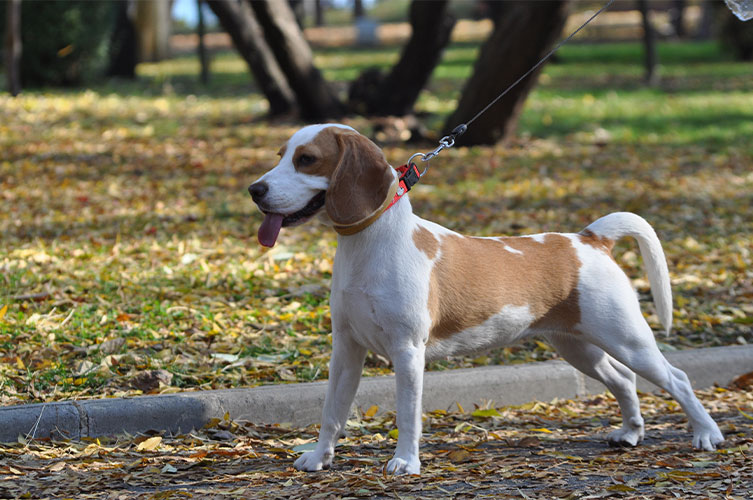
Fact 13: By the Average Dog’s Standard, Beagles Are Fairly Long-Lived
A big pro when it comes to this dog breed is that it enjoys an average lifespan of between 12 and 15 years. This means you get to spend more time with your best furry friend!
Fact 14: Some of the World’s Most Popular Cartoon Dogs Are Beagles
What do Snoopy from Peanuts, Odie from Garfield and Gromit from Wallace and Gromit have in common, apart from all being dogs? They all belong to the same hound dog breed. These beagles helped make their respective franchises such hits.
Fact 15: Beagle Crossbreeds Are Equally Adorable to Their Purebred Counterparts
Beagles are beloved the world over for plenty of reasons. This is also the case for various other dog breeds. It’s no wonder that beagles have been crossbred with other dog breeds to get the best of both worlds. One of the most popular designer dog breeds has proven to be a puggle – a cross between a beagle and a pug.
Some other beagle crossbreeds include:
- The bagel – a cross between the beagle and the basset hound
- The busky – a cross between a beagle and a husky
- The Cheagle – a cross between the beagle and the Chihuahua
Check out BeaglePro.com’s Facts About Beagles for more interesting beagle facts.
Protecting Your Beagle Bestie
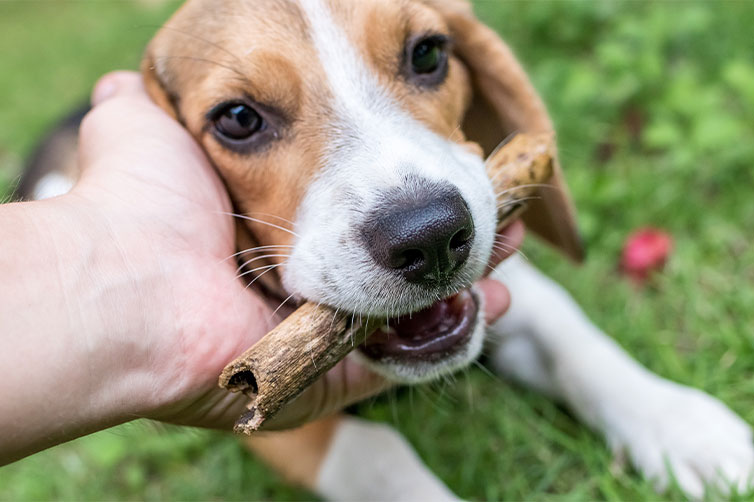
If you want your beagle to be a happy and a healthy dog throughout their life, then you need a reliable tick, flea and mite treatment that works. That’s where Bravecto® for Dogs comes in, available in treatments such as Bravecto® Chew or Bravecto® Spot-On for Dogs.
Feed your beagle a single Bravecto® Chew and they’ll remain protected against fleas and ticks for 12 weeks. Alternatively, apply a single dose of the Spot-On treatment to the skin between your beagle’s shoulder blades to keep them tick-free for 4 months and flea-free for 6 months.
This means that Bravecto® lasts at least 3x longer than traditional monthly treatments. That’s the Bravecto® difference – looking out for your dog for longer.
Subscribe to our Newsletter
Get to know your furry friend better! Sign up for all things dog- or cat-related.
The Hairy Facts about the dreaded hairball
12 April 2021
Help! My dog’s barking mad! Volume 2
12 April 2021
Your Itchy, Scratchy Cat – All About Cat Skin Problems
12 April 2021
The Dog’s Diet: A Bone of contention?
01 April 2021
Mango Fly Worms: How to Spot and Eliminate them
Posted on November 28,2019
Managing Mange And Mites In Your Dog
Posted on June 11,2018
Why Do Cats Purr and How? Learn What Your Cat Is Saying
Posted on October 14,2020
How to Get Rid of Ear Mites in Dogs
Posted on November 06,2019









